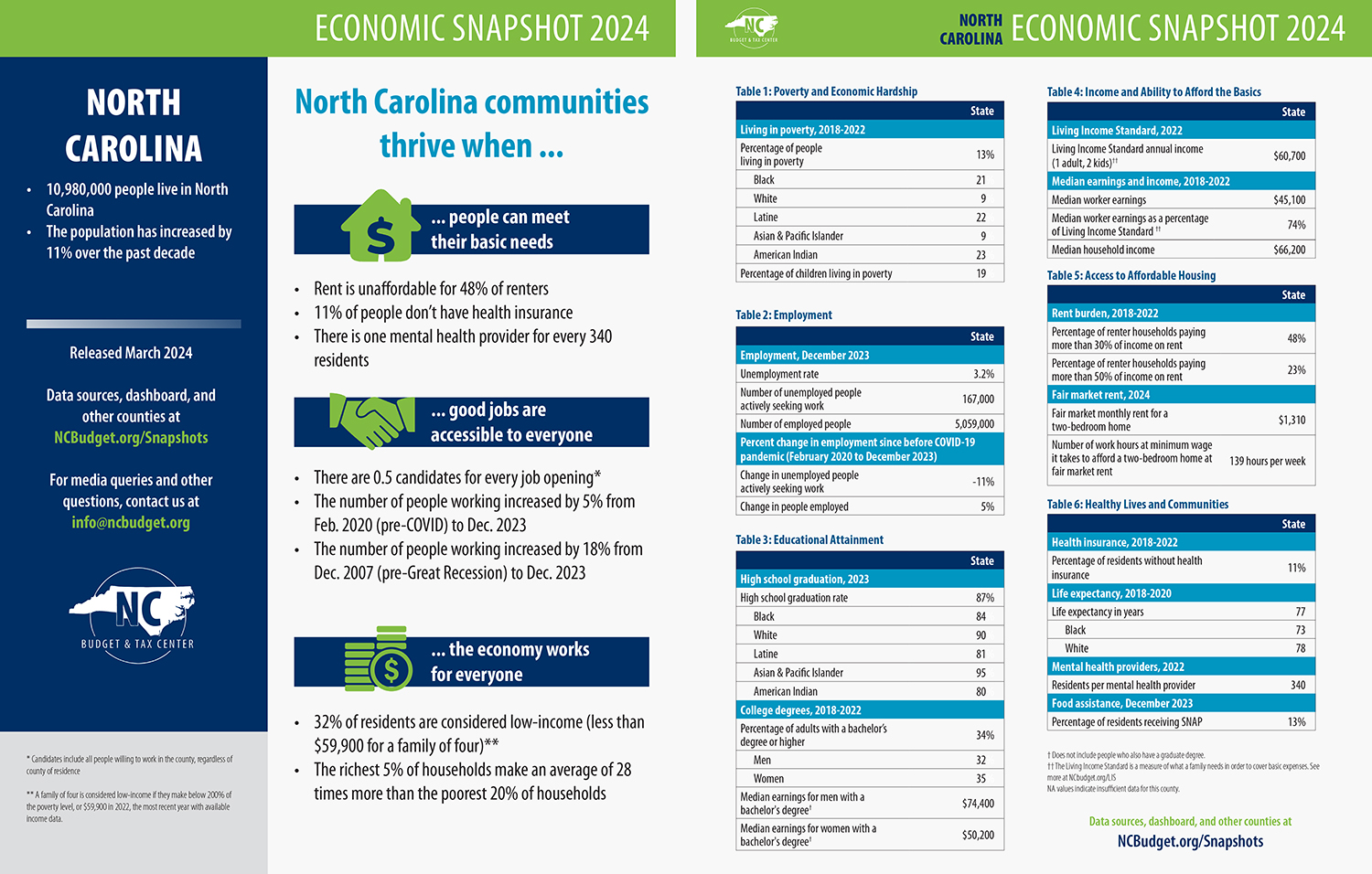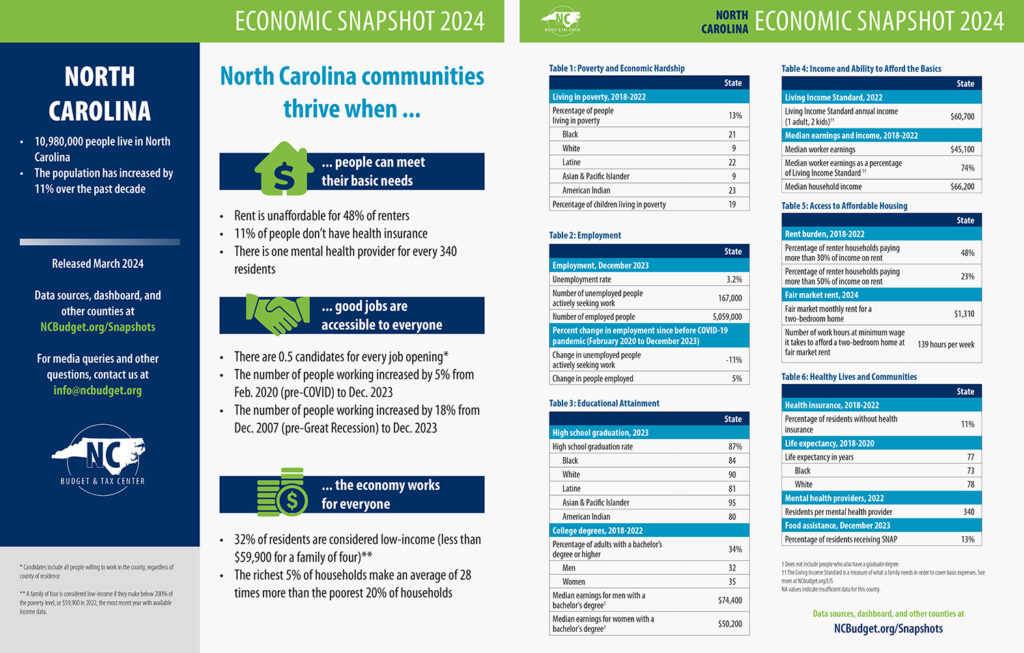
2024 NC County Economic Snapshots released by NC Budget & Tax Center
RALEIGH (March 7, 2024)—Today, the NC Budget & Tax Center (BTC) published our Economic County Snapshots for 2024. Released each year, these snapshots provide at-a-glance information on a variety of economic and social indicators for every county in North Carolina, along with comparisons to state-level data. Data is available is multiple formats for ease of use, including interactive charts and maps that allow for quick comparisons across counties, one-page documents with complete information for each county, and the option to download all data in a single file.
Visit the Economic County Snapshots page
These data profiles are developed to provide an overall picture of how key indicators of well-being vary across the state, including measures of employment, poverty and income, housing affordability, health, education, and supports for working families. BTC's analyst’s collect data from a variety of credible state and national sources, including the U.S. Census Bureau’s American Community Survey, the Bureau of Labor Statistics, and the North Carolina Departments of Public Instruction and Health and Human Services.
These snapshots include data spanning the COVID-19 pandemic as well as more recent indicators that show how local economies are faring in recent months. Select indicators are also broken down by race and gender.
Key statewide findings include:
- The richest 5 percent of North Carolina households have an average income that is 28 times greater than the poorest 20 percent of households.
- Rent is unaffordable for many North Carolina households. Some 48 percent of North Carolina renters are putting put more than 30 percent of income toward their rent, and 23 percent of North Carolinians are spending more than half of their income on rent.
- Nearly one-third of North Carolinians have low annual incomes, meaning incomes under two times the poverty level ($59,900 for a family of four). In nearly every county, Black, Latine, and American Indian people and children are more likely to be living in poverty.
- Poverty rates are generally higher in counties where the population is declining. In counties where the population is growing, residents overall have higher educational attainment and earnings.
“Easily accessible data is a key resource for local communities, and these snapshots are designed to be a tool for people working to build a stronger and more equitable economy in their counties and across the state,” said Logan Rockefeller Harris, Research Manager with the NC Budget & Tax Center. “These data can help assess disparities within and across counties, as well as guide state and local public resources so that every North Carolina community and resident has what they need to thrive.”
- View and download detailed data on your county
- Read the blog post, "Economic Indicators Of Well-Being Should Inform Policy Priorities Across NC"
For media inquiries and other questions, please contact Logan Rockefeller Harris, Research Manager with the Budget & Tax Center, at 919-670-3750 or [email protected]; or Mel Umbarger, Communications & Technology Manager, at [email protected].



